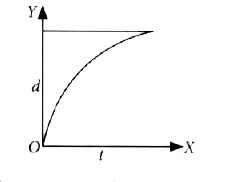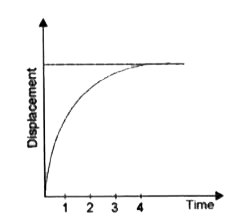The displacement of a particle as a function of time is shown in . It indicates
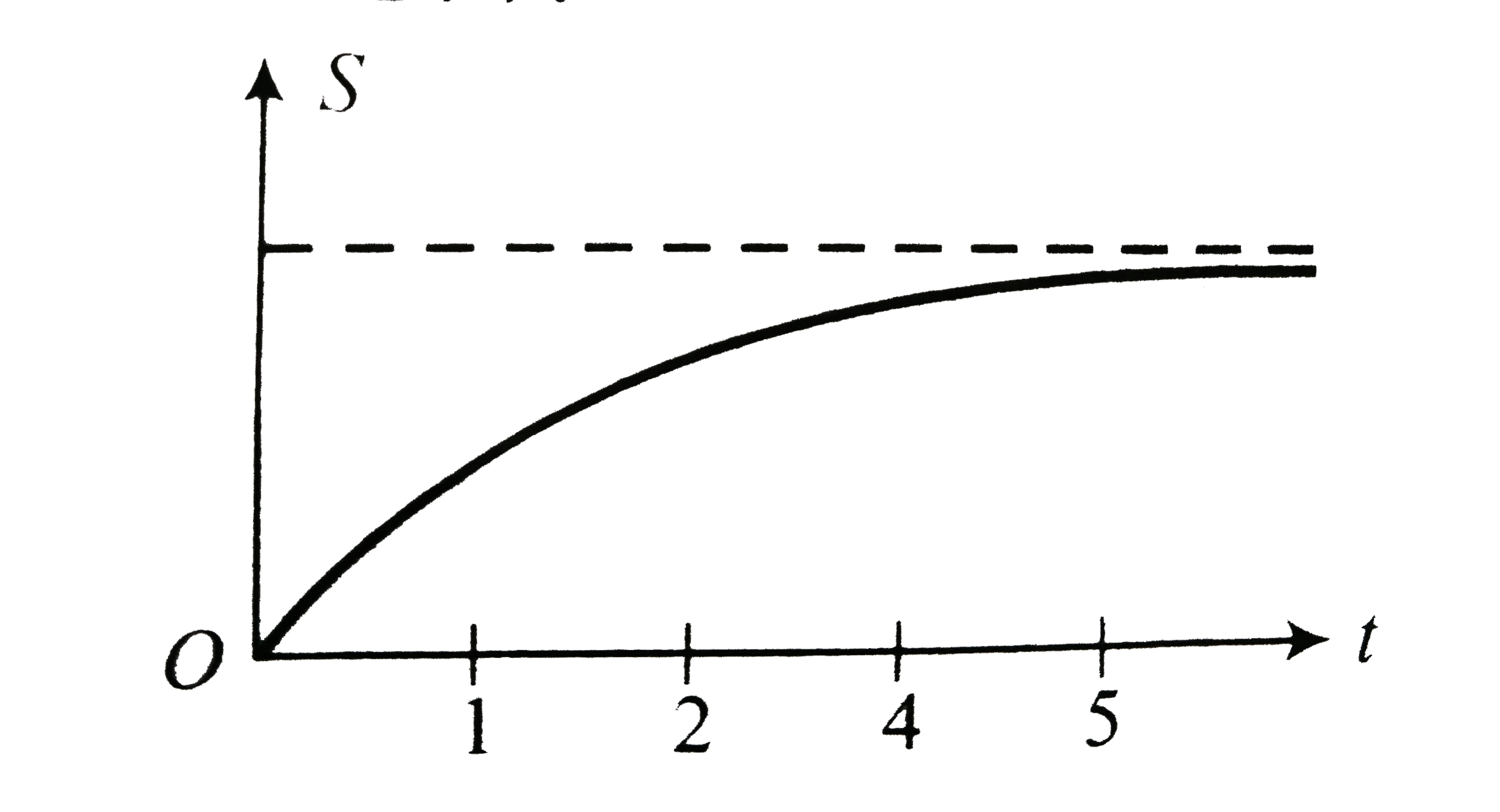 .
.
The particle starts with a certain velocity but the motion is retarded and finally the particle stops
The velocity of the particle decreases
The acceleration of the particle is in opposite direction to the velocity
The particle starts with a constant velocity the motion is accelerated and finally the particle moves with another constant velocity.
The correct Answer is:A, B, C
Initially at origin slope is not zero, so the particle has some initial velocity but with time we see that slope is decreasing and finally the slope becomes zero, so the particle stops finally.
Topper's Solved these Questions
- BOOK - NARAYNACHAPTER - MOTION IN A STRAIGHT LINEEXERCISE - Integer Type Question13videos
MOTION IN A STRAIGHT LINE
- BOOK - NARAYNACHAPTER - MOTION IN A STRAIGHT LINEEXERCISE - Single Answer Question8videos
MOTION IN A STRAIGHT LINE
- BOOK - NARAYNACHAPTER - MOTION IN A STRAIGHT LINEEXERCISE - Passage Type Questions16videos
MOTION IN A STRAIGHT LINE
- BOOK - NARAYNACHAPTER - MOTION IN A PLANEEXERCISE - Level-II(H.W)31videos
MOTION IN A PLANE
- BOOK - NARAYNACHAPTER - NEWTONS LAWS OF MOTIONEXERCISE - PASSAGE TYPE QUESTION6videos
NEWTONS LAWS OF MOTION
Similar Questions
Knowledge Check
- Question 1 - Select One
The displacement of a particle as a function of time is shown in the figure. The figure shows that
 Athe particle starts with certain velocity but the motion is retarded and finally the particle stopsBthe velocity of the particle is constant through outCthe acceleration of the particle is constant throughoutDthe particle starts with constant velocity, then motion is accelerated and finally the particle moves with another constant velocity.
Athe particle starts with certain velocity but the motion is retarded and finally the particle stopsBthe velocity of the particle is constant through outCthe acceleration of the particle is constant throughoutDthe particle starts with constant velocity, then motion is accelerated and finally the particle moves with another constant velocity. - Question 2 - Select One
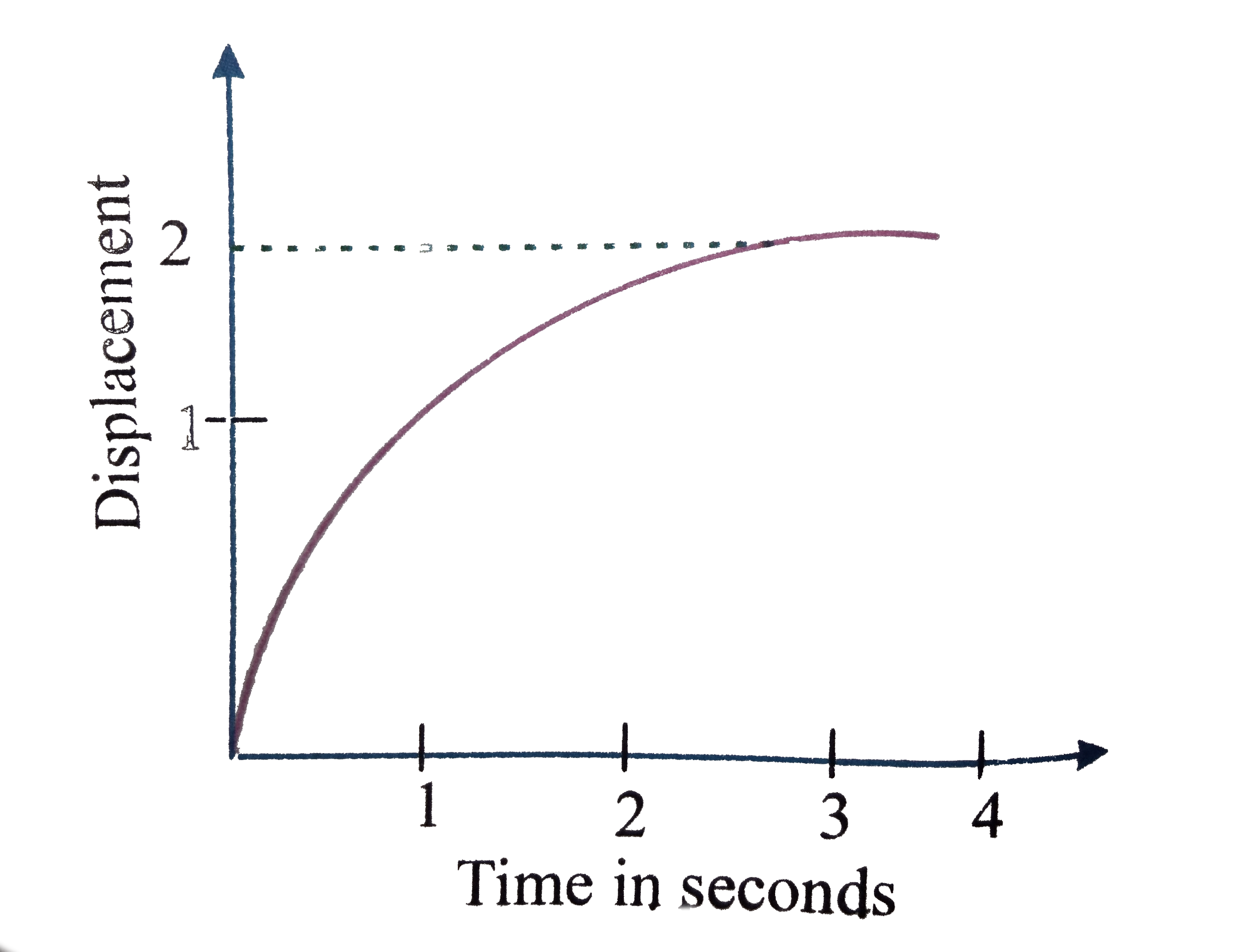
The displacement of a particle as a funtion of time is shown in the figure. The figure shows thatAthe particle starts with certain velocity but the motion is retarded and finally the particle stopsBthe velocity of the particle is constant through out.Cthe acceleration of the particle is constant throughoutDthe particle starts with constant velocity, the motion is accelerated and finally the particle move with another constant velocity. - Question 3 - Select One
The displacement of a particle as a function of time is shown in figure. The figure indicates that
(##MOT_CON_NEET_PHY_C23_E02_025_Q01.png" width="80%">Athe particle starts with a certain velocity , but the motion is retarded an finally the particle stopsBthe velocity of particle is constant throughoutCthe acceleration of the particle is constant throughoutDthe particle starts with a constant velocity, the motion is accelerated and finally the particle moves with another constant velocity
A transverse sinusoidal wave of wavelength 20 cm is moving along a string towards increasing x. The transverse displacement of the string particle at as a function of time is shown in Figure.
The equation of the wave with all the constants evaluated is:
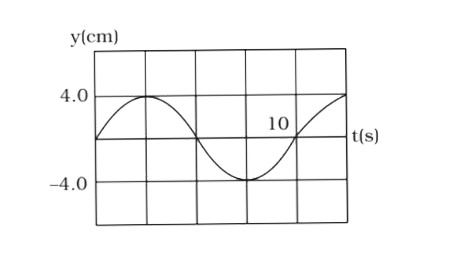 View Solution
View SolutionThe displacement of a particle in an SHM in one time period is
View SolutionA transverse sinusoidal wave of wavelength 20 cm is moving along a string towards increasing x. the transverse displacement of the string particle at x=0 as a function of time is shown in figure.
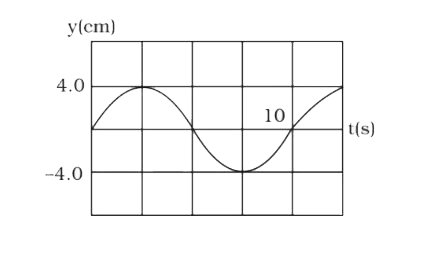
Q. The velocity of propagation of the wave is ?View SolutionThe displacement-time graph of a particle is as shown below. It indicates that
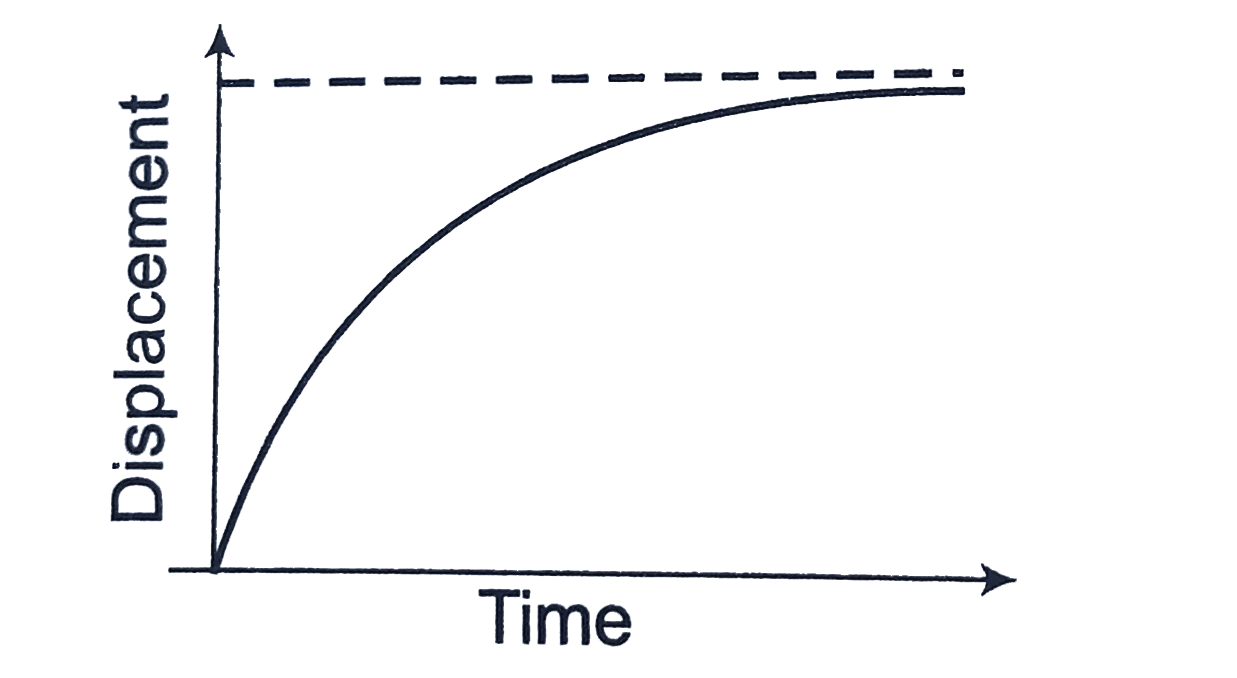 View Solution
View SolutionIn the diagram shown, the displacement of particles is given as a function of time. The particle a is moving under constant velocity of 9m/s. The particle B is moving under variable acceleration. From time t=0s to t=6s. The average velocity of the particle B will be equal to :-
 View Solution
View Solution


